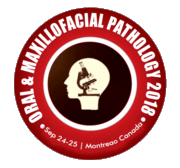
Muy-Teck Teh
Institute of Dentistry, Queen Mary University of London, UK.
Title: From Transcriptome to a Pratical & Cost Effective Digital Cancer Test
Biography
Biography: Muy-Teck Teh
Abstract
Clinical translation of many cutting-edge technologies is hindered by their high costs and complexity despite highly promising results. Hence, affordability and practicality should be the core principles when developing a clinical tool. Big-data technological advances have produced large amount of biomolecular data for human cancers. However, the translation of these data into clinical use remains a challenge and impractical. In the attempt to resolve this problem, we have developed an affordable, practical and customisable cancer test - quantitative Malignancy Index Diagnostic System (qMIDS), which converts multiple gene expression levels (with SYBR-green based RT-qPCR) via an algorithm to provide a digital readout indicative of disease status. To date, we have collectively validated the qMIDS test on over 427 clinical head and neck samples from Europe and Asia, giving a diagnostic sensitivity/specificity/accuracy of ~90% compared to the gold-standard histopathology. We have further demonstrated the customisability and transferability of qMIDS test for diagnosing different squamous cancer types (vulva and skin). We also demonstrated the use of qMIDS for predicting the risk of drug resistance. We provided evidence that qMIDS was able to quantitatively and objectively stratify cancer aggressiveness/behaviour using a panel of biomarkers selected from transcriptomic databases. This study demonstrated an affordable method using a well-established and widely available qPCR technology for translating omics data into a practical and customisable clinical tool for disease diagnosis and prognosis.

